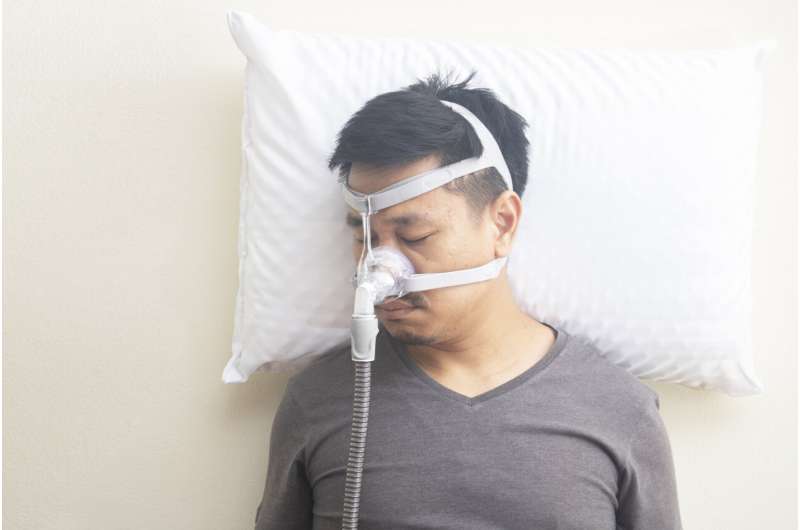
Some patients with coronary artery disease and non-sleepy obstructive sleep apnea (OSA) may be protected against serious cardiac events by CPAP therapy, according to research presented at the ATS 2021 International Conference.
Previous studies have shown no benefit of CPAP for non-sleepy OSA patients (i.e. patients who don’t report daytime sleepiness). These individuals have approximately the same number of apneas and hypopneas (total or partial airway blockages during sleep) shown on polysomnography (sleep studies) as those patients who report daytime sleepiness.
Ali Azarbarzin, Ph.D., Division of Sleep and Circadian Disorders, Brigham and Women’s Hospital, assistant professor of medicine, Harvard Medical School, and colleagues re-analyzed data from the RICCADSA clinical trial (NCT00519597) of cardiovascular risk for non-sleepy OSA patients with heart disease. They conducted their analyses to determine study participants’ pulse rates and test the hypothesis that patients with higher pulse rate responses to apneas and hypopneas might be at most risk for serious cardiovascular events due to their OSA.
“If this were true, then we would expect to see a preferential benefit from using CPAP on cardiac outcomes in those with the higher pulse rate response,” said Dr. Azarbarzin. “Indeed, this is what we found: The greater the pulse rate response, the greater the calculated treatment benefit of CPAP.”
Dr. Azarbarzin and colleagues examined pulse rate as measured by pulse oximetry during polysomnography for those participating in the RICCADSA trial who had non-sleepy OSA. They then matched patients’ pulse rates with whether they had cardiovascular or cerebrovascular events such as heart attack and stroke while experiencing apnea or hypopnea. Next, they used statistical methods to assess whether changes in pulse rate influence the protective effect of CPAP treatment.
The researchers found that CPAP provided protection from cardiac events in those non-sleepy OSA patients whose pulse rates rose significantly during sleep apnea events. The authors noted: “Our study provides novel evidence that a greater heart rate responsiveness to obstructive (airway) events is an identifiable, deleterious and potentially reversible risk factor that could be used to select patients most likely to exhibit long-term cardiovascular benefit from CPAP therapy.”
Some patients have a major surge in their pulse rate at the end of these events, while others barely increase their pulse rate. Dr. Azarbarzin noted that, intuitively, these groups may have different cardiovascular outcomes.
“Our study suggests that there is, in fact, a subgroup of non-sleepy patients with OSA for whom CPAP could provide a reduction in risk—those with a higher pulse rate response to their respiratory events,” he said.
He added, “This re-analysis project owes a lot to Dr. Yuksel Peker (principal investigator for the RICCADSA trial), who was proactive about sharing his data, as well as our collaborator Dr. Andrey Zinchuk from Yale School of Medicine, who led efforts to make these data analyzable for our study. It is a great example of data sharing.”
American Thoracic Society

